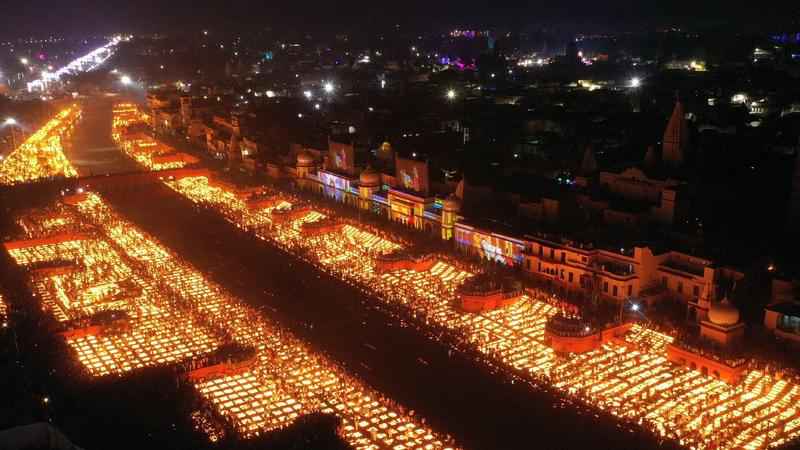Diwali marked in Asia with celebrations, prayers

People light lamps on the banks of the river Saryu in Ayodhya, India, Wednesday, Nov. 3, 2021. Millions of people across Asia are celebrating the Hindu festival of Diwali, which symbolizes new beginnings and the triumph of good over evil and light over darkness. The celebrations were especially spectacular in Ayodhya city in northern Uttar Pradesh state, where over 900,000 earthen lamps were lit at the banks of the Saryu River as desk fell Wednesday. Hindus believe the city is the birthplace of god Ram. (AP Photo/Rajesh Kumar Singh)
Millions of people across Asia are celebrating the Hindu festival of Diwali, which symbolizes new beginnings and the triumph of good over evil and light over darkness.
The festival is celebrated mainly in India, but Hindus across the world, particularly in other parts of Asia, also gather with family members and friends to socialize, visit temples and decorate houses with small oil lamps made from clay. The festival is also marked by raucous parties and fireworks displays, often throughout the night.
Like every year, India has been lit up in a dazzling display of lights and colors. Brightly colored rangoli designs are drawn at the entrances of homes and offices, which are decked in fairy lights.
The celebrations were especially spectacular in Ayodhya city in northern Uttar Pradesh state, where over 900,000 earthen lamps were lit on the banks of the Saryu River as desk fell Wednesday. Hindus believe the city is the birthplace of the god Ram.
In eastern Ahmedabad city in Gujarat state, devotees worshipped their account books as the festival also marks the start of the new Hindu financial year.
The day was marked as Tihar, also known as Deepawali, in neighboring Nepal. There, the five-day celebrations began Tuesday and people thronged markets and shopped for marigold flowers, which hold huge cultural significance during the festival. On Wednesday, devotees celebrated dogs that are regarded as the guardian of the Hindu death god Yama.
In Malaysia, Hindu devotees prayed at temples and lit clay oil lamps. Some climbed the colored stairs to pray at the Batu Caves temple just north of Kuala Lumpur to pay homage to their deity, Lord Muruga.
People also celebrated with friends and families in Indonesia, Japan and Taiwan.
Diwali marks Hindu god Ram’s return to his kingdom after 14 years in exile. Hindus believe that during Diwali the goddess of wealth, Lakshmi, will visit their homes if they are illuminated and decorated.
The Diwali festival is also observed among Jains, Sikhs and Buddhists. While each religion marks the festival with different historical events and legends, they all represent the victory of good over evil.